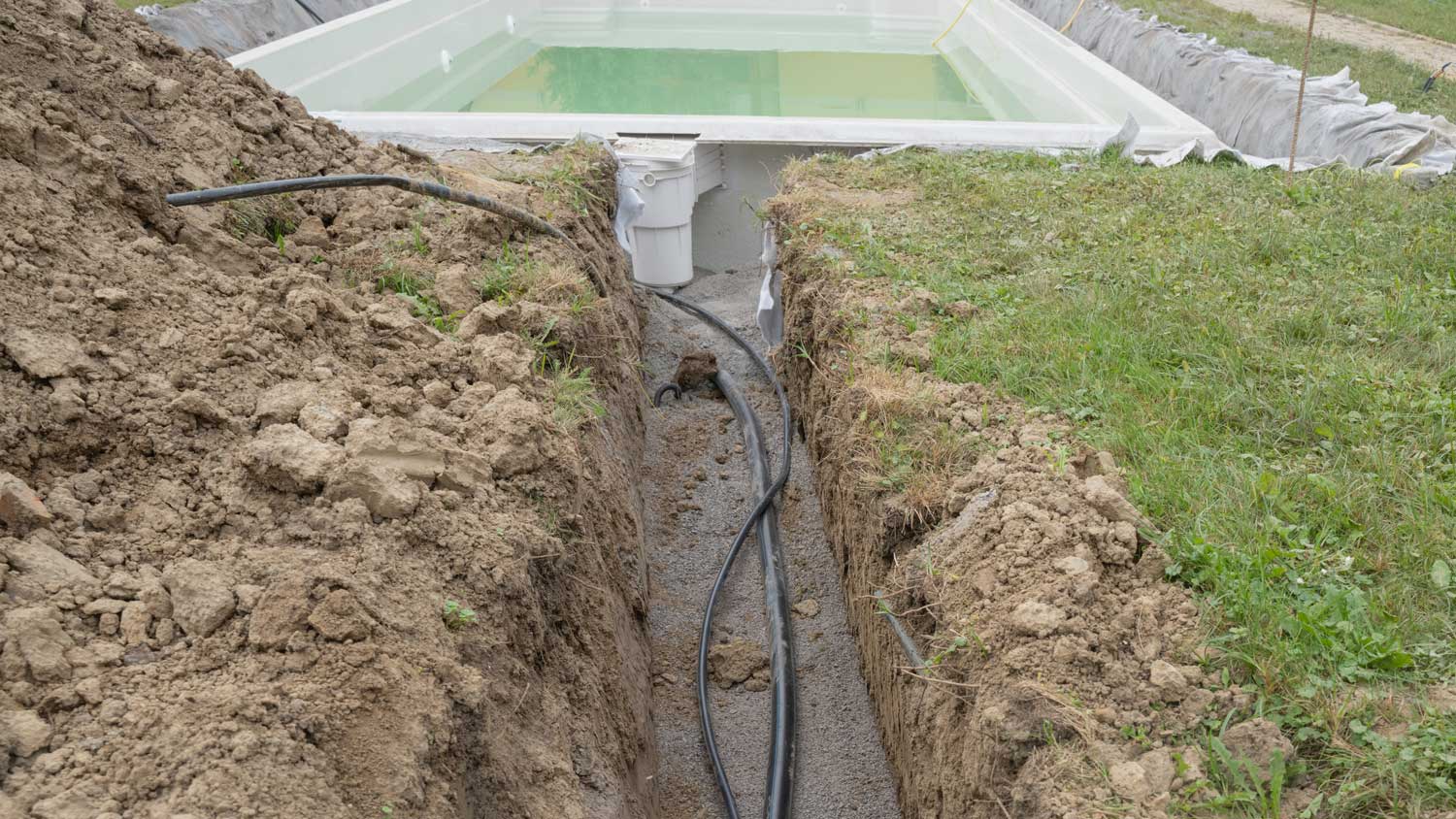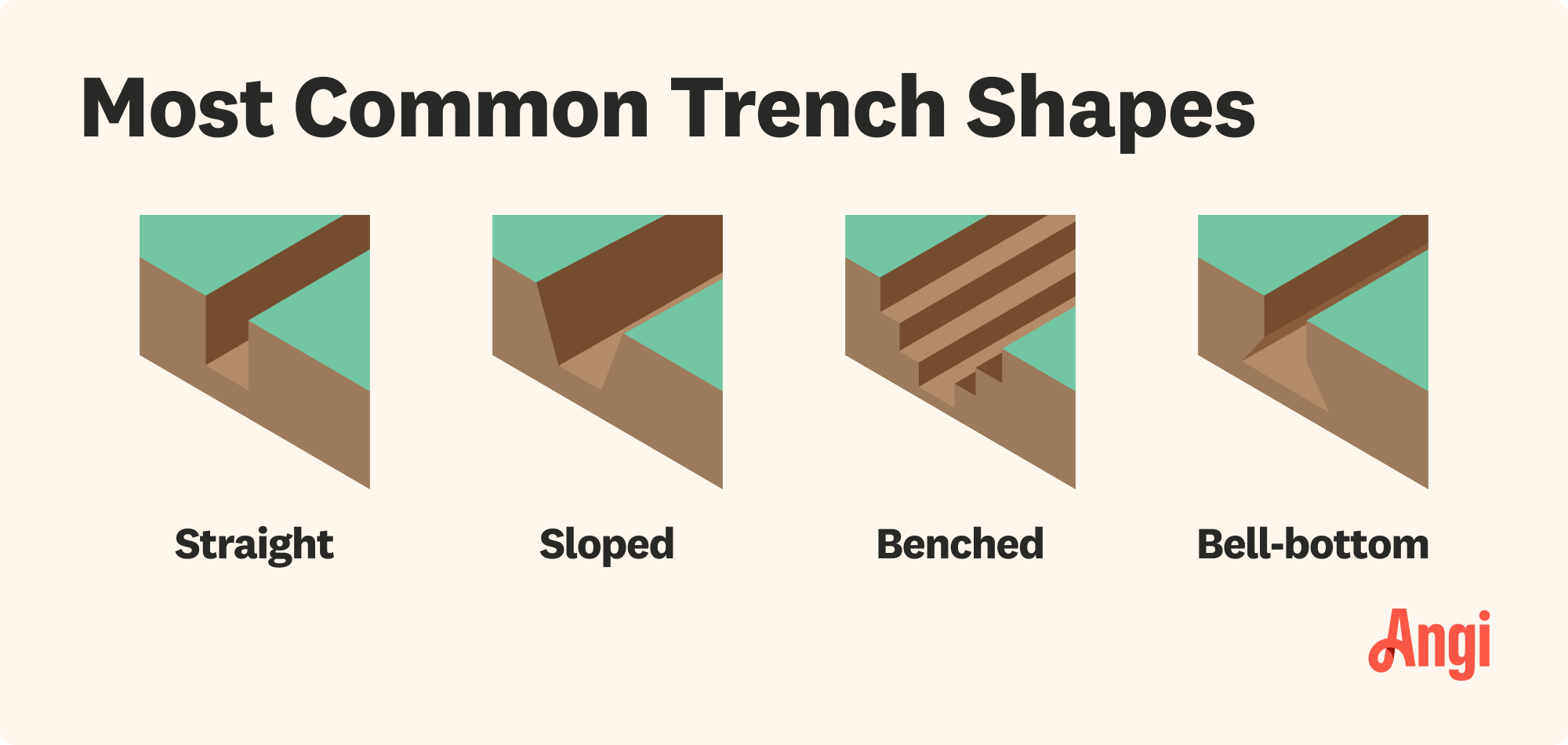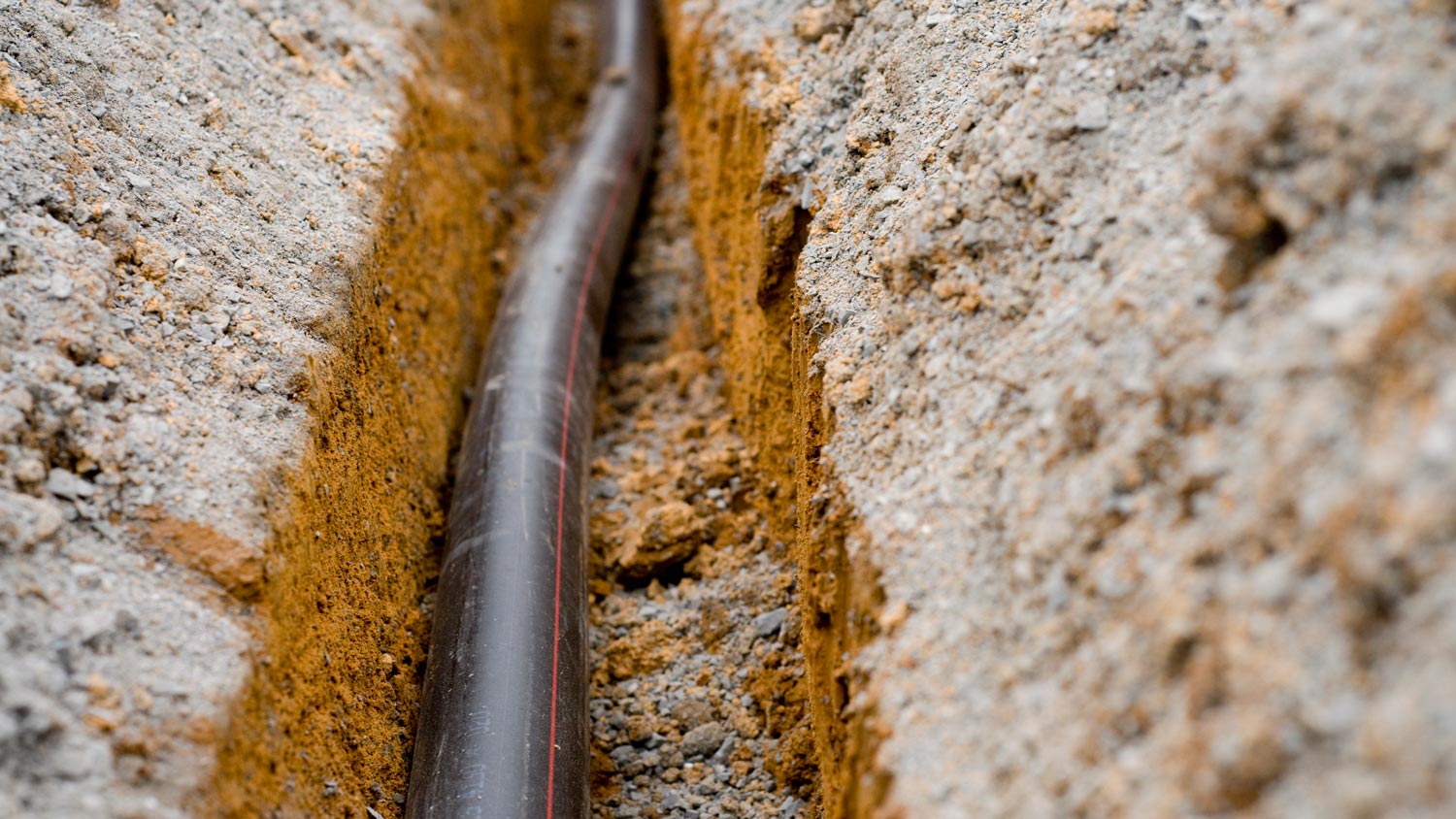
If you’re building a new home, you might need to consider the cost of digging out a basement. Use this pricing guide to get an estimate for the project.
Discover the difference before you dig


Trenches are underground channels that are deeper than they are wide, but ditches are wider, shallower, and used for drainage.
Trenches and ditches are both excavations, but they serve different purposes.
Trenches often contain electrical wiring, sewer lines, or parts of a drainage system.
You’ll find ditches in residential settings, but they’re commonly found near roadways, too.
You might’ve heard the terms “trench” and “ditch” used interchangeably, but they aren’t quite the same. In short, trenches are like underground tunnels that can perform several different functions, and ditches are fully open at the top and designed to help prevent flooding. Not sure which one is right for your home? We’ll help you figure it out in this trench versus ditch comparison.

Ditches and trenches are two types of channels that are carved into the ground. Trenches are underground excavations that house utility lines, sewage systems, and drainage, whereas ditches are closer to the surface and act as a drainage system for rainwater.
| Type of Difference | Trench | Ditch |
|---|---|---|
| Purpose | Utility lines, sewage, drainage, retaining walls | Drainage |
| Size and shape | Narrow and deep | Wide and shallow |
| Location | Underground | On the surface |
| Installation | More complex | Simpler |
| Aesthetic | Hidden | Open and visible |
Trenches serve different purposes depending on the project. For example, you may need to dig a trench when installing or repairing water mains, sewer lines, gas pipes, or drainage systems. You might also need one when building a retaining wall or running certain types of electrical wiring.
On the other hand, ditches are primarily used for drainage. They provide a pathway for stormwater to flow through so that it doesn’t collect in your yard or flood your home. You’ll also find ditches alongside roads and highways, where they help prevent the roads from flooding.

Trenches are narrow excavations that are deeper than they are wide. A trench’s purpose will determine how deep a pro will dig down for it, but most residential trenches are at least 1 foot in depth. As an example, if you’re digging a trench as part of a French drain installation, it should be 18 inches deep.
Residential ditches are wider than residential trenches, which helps water move through them easily. Since they’re located just below ground level, they tend to be shallower than trenches, as well.
Trenches lie underground. When creating a trench, your local excavation company will use a trencher or shovel to dig to the appropriate depth. Then, after setting up your underground utilities (or whatever you’re using the trench for), they’ll fill up the empty space with soil, stone, or another backfill material.
In contrast, ditches are open channels that are cut out of the earth’s surface. But unlike trenches, ditches aren’t filled back in after excavation.
Whether you’re installing a trench or a ditch, the process will require plenty of physical labor. However, since trenches are located underground and need to be backfilled, creating one takes more work, equipment, and time than digging a ditch. Larger trenching or ditch-digging projects require you to use a trencher, which is a heavy-duty machine with sharp teeth or chains.
You may be able to tackle small-scale trench or ditch installation yourself, but you’ll need to rent a trencher from a hardware store or equipment rental company. Make sure to weigh up the costs beforehand, though. The price of a trencher rental is often more costly than professional labor when you also factor in project time and other material costs.
It’s also important to locate any underground utility lines and check your local regulations before you start digging. Depending on the scope of your project, you may need a permit.

After you finish excavating and backfilling a trench, you won’t be able to see the trench itself. However, because trenching involves ripping up your lawn, it can leave a seam in your grass that you might not like the look of. If so, you can lay new sod over the area.
By comparison, a ditch is open at the top. It has gentle slopes that run from the ground’s surface to the bottom of the ditch. If you want to spruce up the look of your ditch, you can talk to a landscaping pro about planting trees, flowers, or rocks.
From average costs to expert advice, get all the answers you need to get your job done.

If you’re building a new home, you might need to consider the cost of digging out a basement. Use this pricing guide to get an estimate for the project.

Time to get rid of that old chipped and crumbling walkway? Concrete removal costs can add up, but you have options to simplify the process. Learn more here.

The cost to re-level your mobile home depends on your home’s location, size, and whether it needs extra support. Read more about the cost of leveling your mobile home.

Planning a yard project? Know when to call 811 to keep you safe while avoiding expensive damage to underground utilities.

Can you add a basement to a house? Use this guide to learn the benefits and drawbacks of adding a basement to your home.

Discover what excavation is, the different types, and when it's needed in construction. Learn key insights for your next big home project.